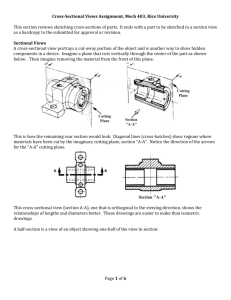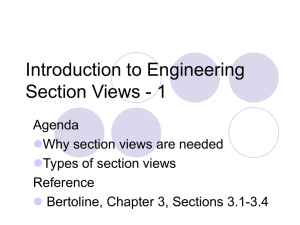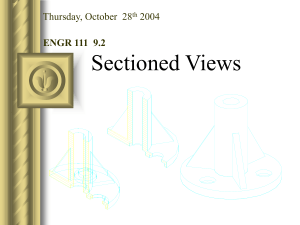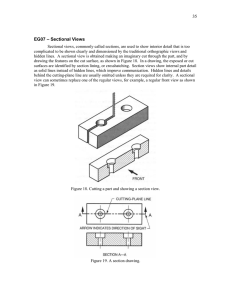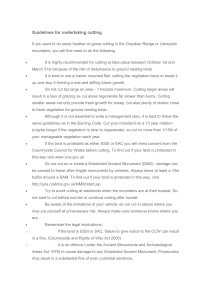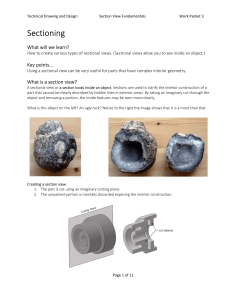206.05 Wall Section Features
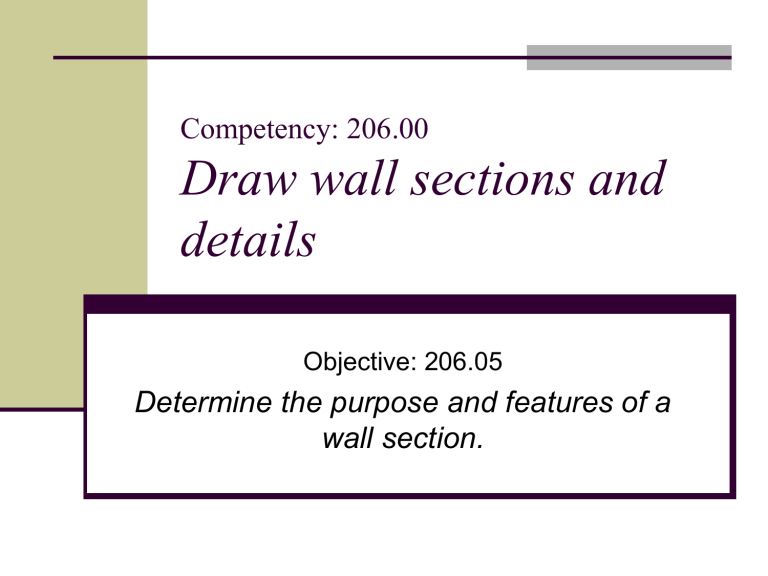
Competency: 206.00
Draw wall sections and details
Objective: 206.05
Determine the purpose and features of a wall section.
Sectional Drawings
Used to reveal the internal construction
Provide information concerning materials and assembly
Detail sections show specific parts of construction
Sectional Basics
Cutting Planes
Edge of cutting plane is drawn as a line on the floor plan
Heavy, dark line
Coding includes two dashes
Arrows indicate direction of sight
Most often attached to a circle that identifies the section and its location within the drawing set
Sectional Basics
Cutting Planes
Sometimes only the ends are shown to prevent interference with other information
Assumed to be a straight line between ends
If offset, the bend (offset) is shown
A cutting plane extending fully across the short dimension of the structure defines a transverse section
A cutting plane extending fully across the long dimension of a structure defines a longitudinal section
Sectional Basics
Section lining (hatching)
Features behind the cutting plane are not section, but are shown in proper position and scale
Materials are defined by symbols
(section lines)
Hatching (section lining) is thinner than visible lines
Section hatching
Common Symbols
Brick
Steel
Insulation
Section hatching
Common Symbols
Earth Sand
Gravel
Concrete
Lumber
Drawing Scale
Sections showing the entire building are drawn at small scales
¼” = 1’-0” are most common
Small scales do not allow detail
Break lines are used to reduce distances by removing repetitive information
Used where construction does not change over a long distance
Allows drawing large areas at readable scales
Long break lines have a center zigzag or looped connection
Drawing Scale
Scale selected for a Typical Wall
Section should allow the details to be clearly shown while still fitting the available space
¾” = 1’-0”
1” = 1’-0”
1½” = 1’-0”
Dimensions
Specific elevation numbers, distances, and sizes of building materials
Important dimensions are often included
Floor to ceiling heights
Crawl space vertical height
Footing sizes
Foundation wall thickness
Roof overhang
Roof slope
Dimensions
The order of notes is to give number, size, and material description of various building elements
Ex: 2-2 x 4 DOUBLE TOP PLATE
Leaders lead from the note to where the note applies
Elements Shown on
Typical Wall Section
Footing
Foundation
Drain tile and waterproofing as needed
Sill and sill anchoring system
Joists and Rim Joists
Subfloor
Underlayment
Sole plate
Wall stud
Double top plate
Wall sheathing material
Ceiling joist or truss
Rafter or truss
Fascia (if included)
Soffit (if included)
Lookouts and other soffits nailers
Drip edge
Building paper
Roof covering material
Insulation for walls, floors, ceilings
Interior and exterior wall finish materials and trim
Metal straps (hurricane ties)


